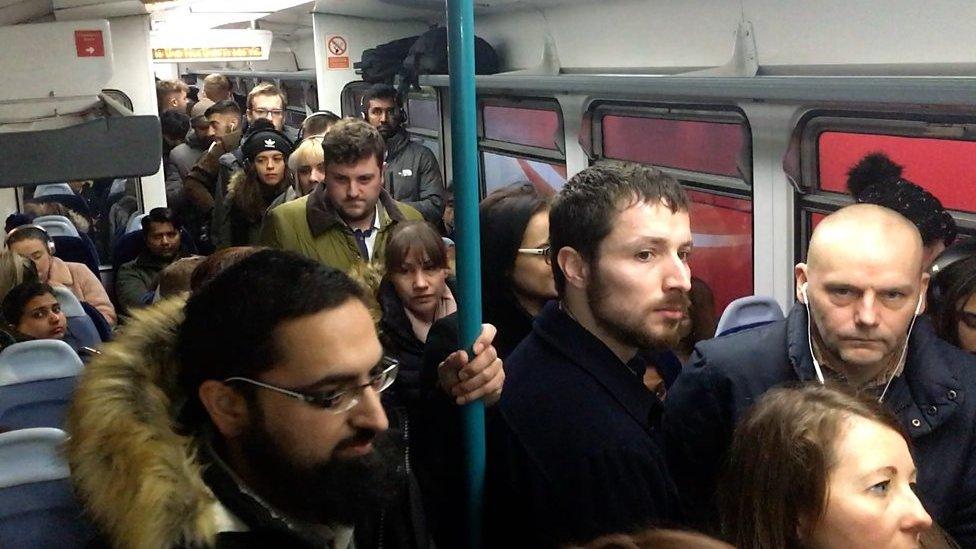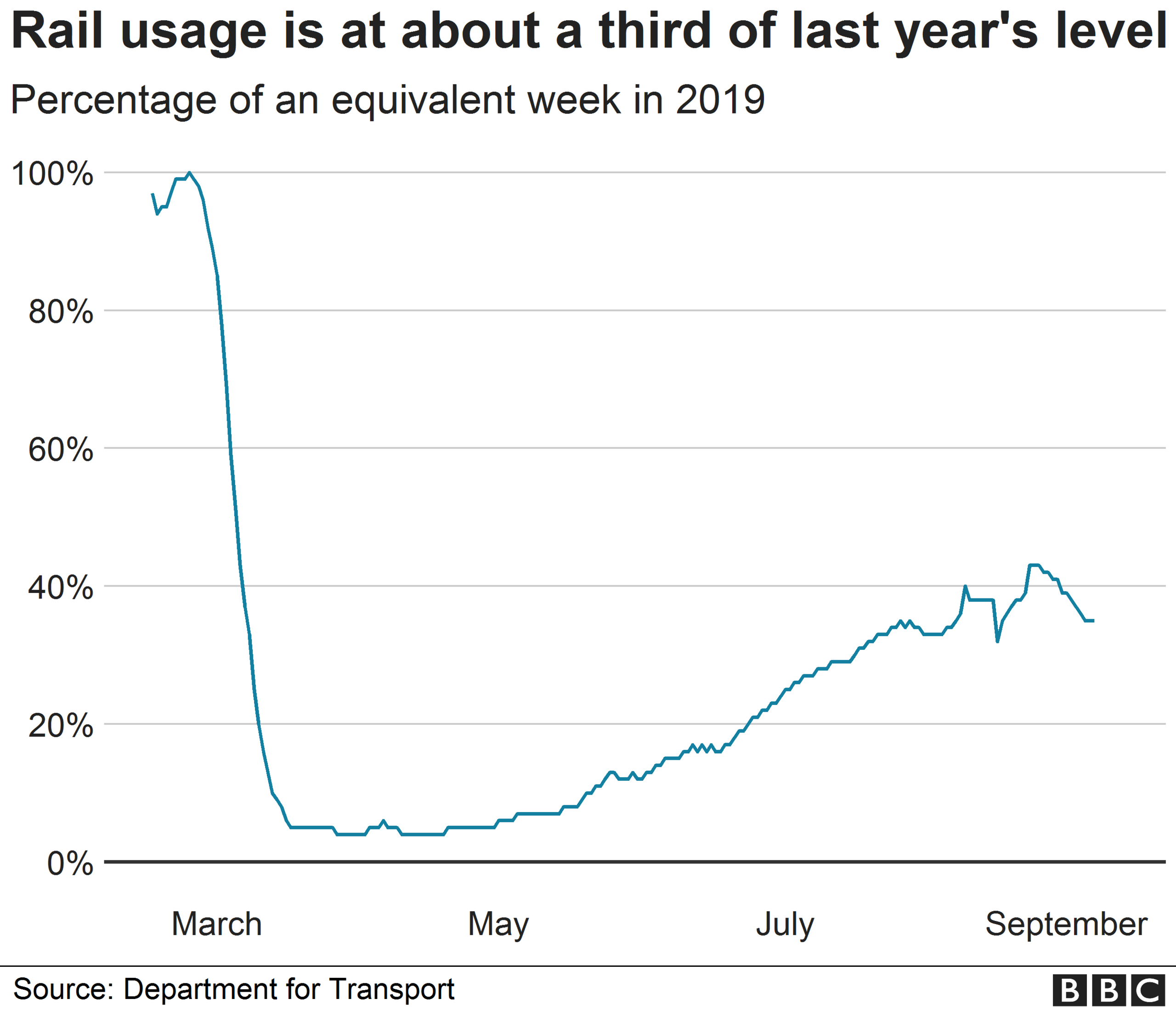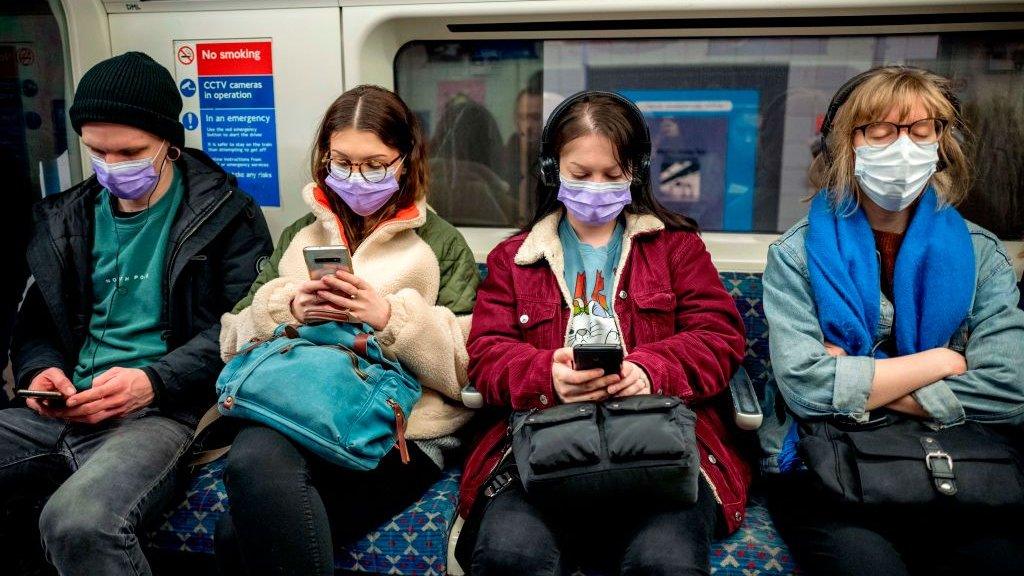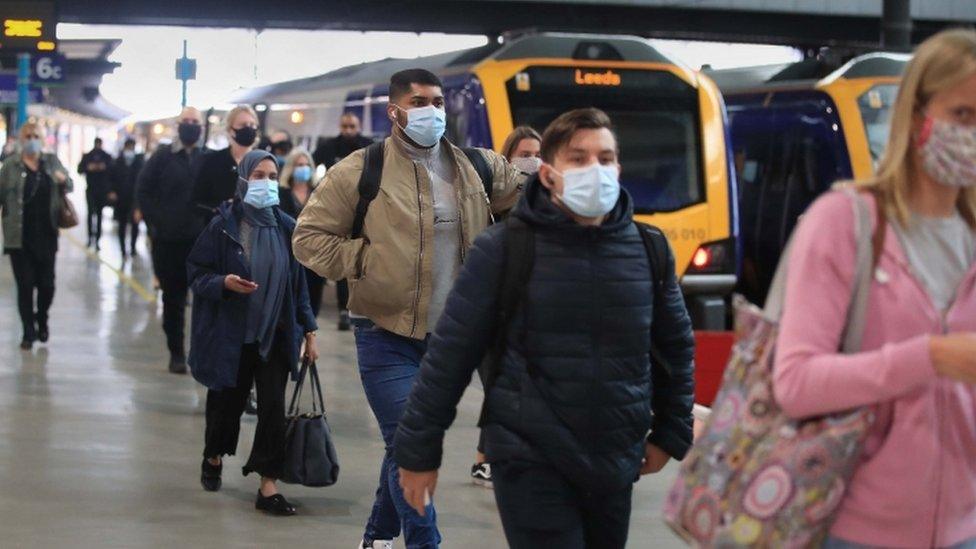Pre-Covid trains left one in six rush hour passengers standing
- Published

Official figures show one in six rail passengers were standing in the morning and evening peaks before coronavirus
One in six train passengers had to stand due to overcrowding in the pre-Covid rush hour, new figures suggest.
Department for Transport (DfT) data for autumn 2019 shows 19% of peak time passengers in London were standing, followed by 16% in Birmingham.
The most overcrowded train in England and Wales was the 08:02 from Oxford to London Marylebone which was almost twice its capacity (196%).
Rail use has plunged to about a third of last year's level due to Covid-19.

The DfT annual data does not cover the impact of the pandemic, which has seen people encouraged to work from home if possible and led to the scrapping of the rail franchising system.
It shows that on a typical weekday last autumn 280,600 passengers, about one in every six, across 14 cities had to stand during the morning and evening peak.
The rate of 16.4% was a slight fall on 2018's 16.8%.
The DfT said since the 08:02 Oxford to London Marylebone was found to be the most overcrowded train, an extra service from High Wycombe had provided a further 352 seats.

Most overcrowded trains in England and Wales
These are the 10 trains with the highest number of standard class passengers as a percentage of the maximum allowable capacity at the busiest calling point on the route. Some services were observed only once.
08:02 Oxford to London Marylebone (Chiltern Railways): 196%
07:32 Woking to London Waterloo (South Western Railway): 182%
07:38 Enfield Town to London Liverpool Street (London Overground): 180%
15:08 Weymouth to Gloucester (Great Western Railway): 178%
18:30 London Waterloo to Portsmouth Harbour (South Western Railway): 174%
05:50 Wolverhampton to London Euston (West Midlands Trains): 171%
05:43 Portsmouth Harbour to London Waterloo (South Western Railway): 169%
07:14 Alton to Waterloo (South Western Railway): 168%
907:29 Chingford to London Liverpool St. (London Overground): 166%
07:16 King's Lynn to King's Cross (Great Northern): 165%
Source: Department for Transport

In London, almost 19% of peak time passengers, about 232,800 people, would stand, compared with 47,700 in 13 cities outside London.
In Birmingham, 16,800 passengers, just over 16%, would stand during the morning and evening peak followed by 15.3% in Leeds.

- Published18 May 2020

- Published21 September 2020
